Michel Blazy
Instant Mashed Potatoid
13.4. —
16.6.2002
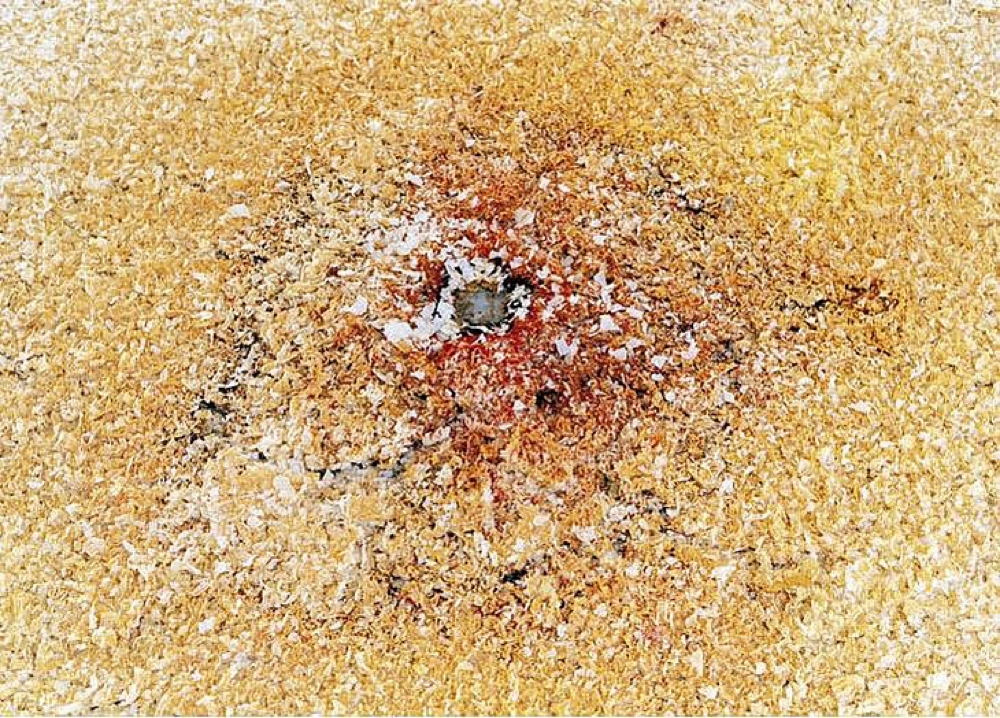
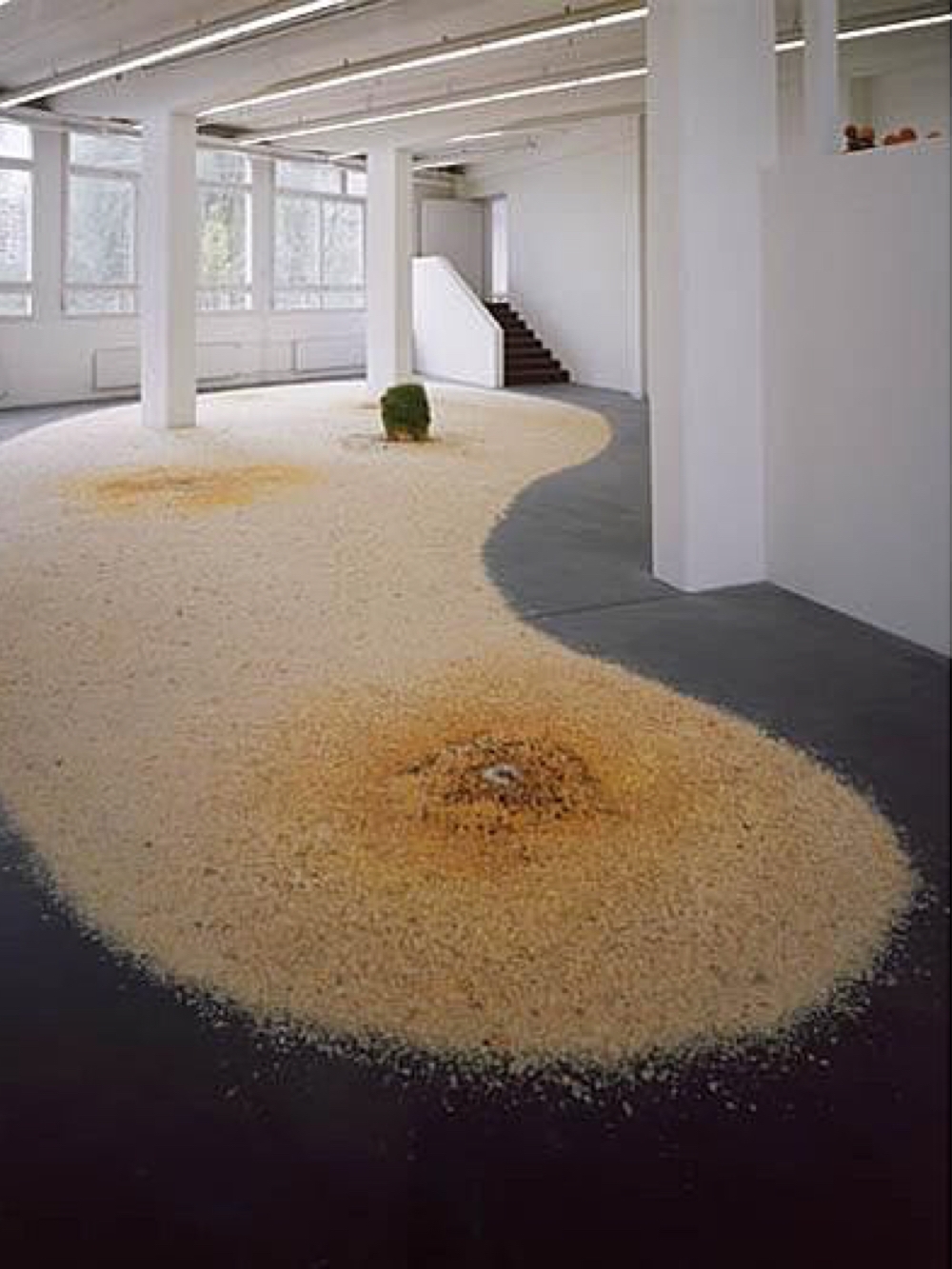
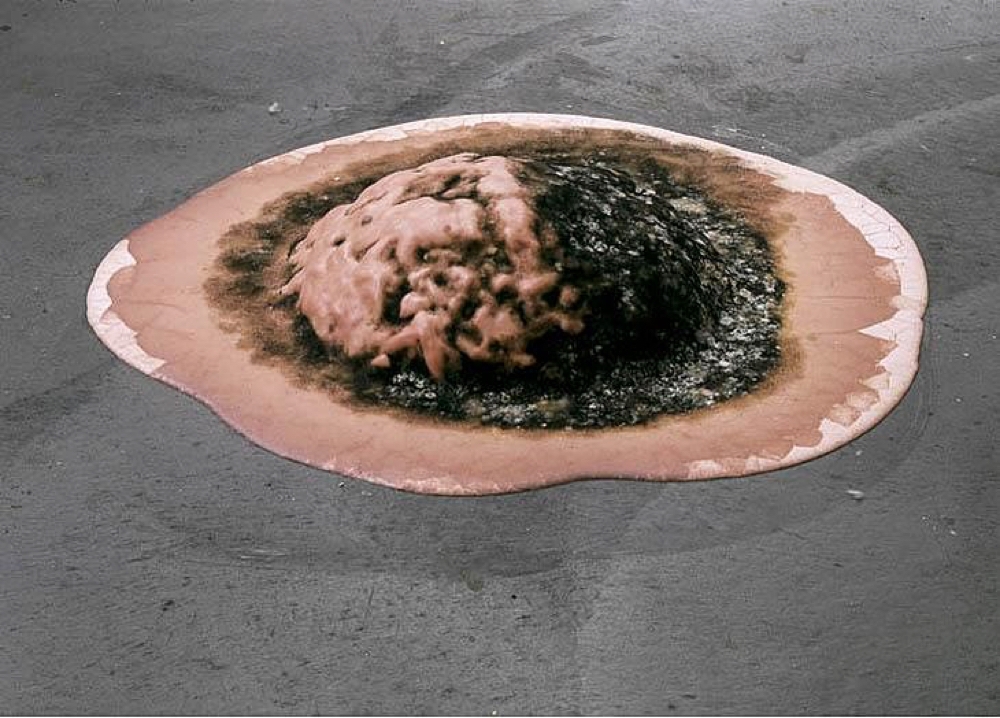
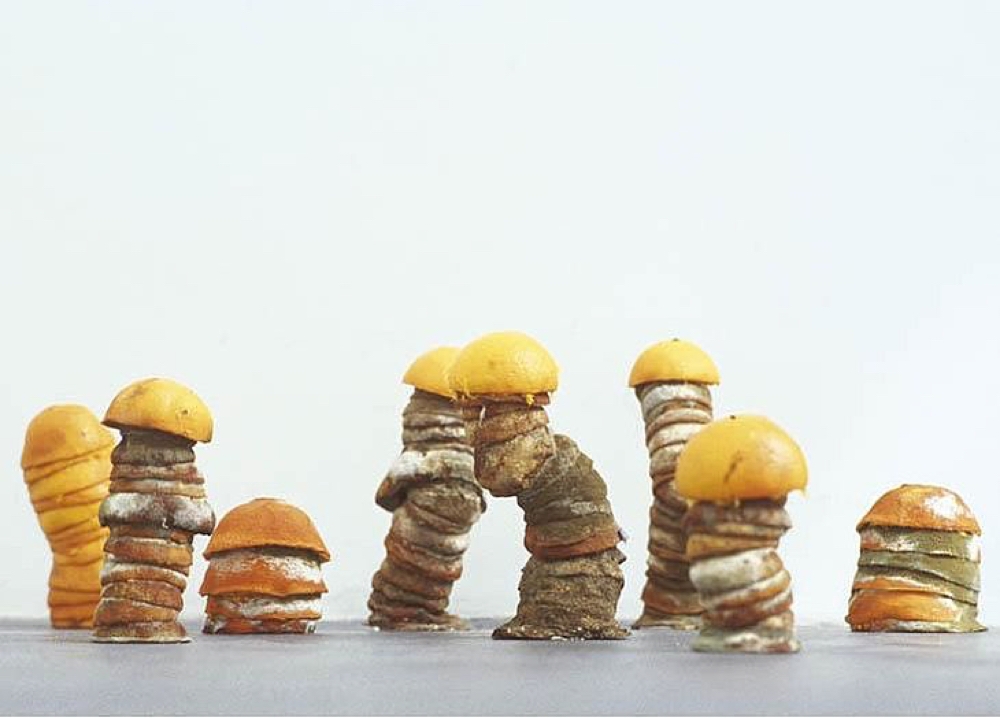
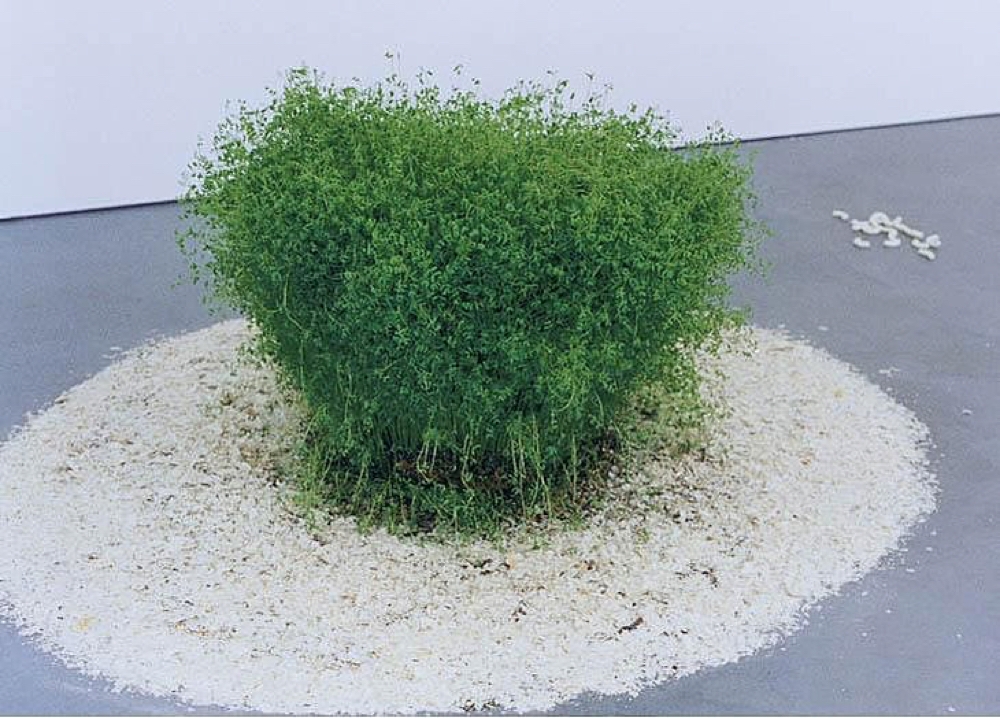
Michel Blazy once described the common basis of all his work as, “Tout simple, le super-marché”. In reality, most of his materials come from markets for building or agricultural materials, or simply supermarkets. The list of materials he has used in this exhibition reads like instructions for cooking or a DIY installation: rice flour, food colouring, cottonwool, irrigation pipes, programmer for irrigation, nylon yarn and cooking utensils, to name a few.
Blazy’s contribution for the Kunsthaus is entitled Instant Mashed Potatoïd, playing not only on the fast food kitchen and its mashed potato production but also on the French term for undefinable forms — “potatoïd”. “Instant”, the component of time, the instantaneous and immediate is coupled with “mashed potatoïd”, describes the state of the material. This becomes indicative of what takes place in the show: water drips from the ceiling in regular intervals onto the fields of potato flakes. Because food colouring is added to these Champs de pommes de terre, the colour of the pools of water gradually changes and the capillary effect in the potato flakes makes various ornamental forms emerge.
The artist’s drawings are yet another area where this capillary effect occurs. When the core of the felt pen and the sheet of paper combine with water they begin to interact, defining the various stages of change over a long period of time. The drawings therefore represent areas where a concentration of processes occurs.
The artist has installed a third capillary station in the Kunsthaus’ gallery where visitors are asked to drink a glass of orange juice, which they have to first squeeze themselves. The ‘absorbing’ consumer is then requested to pile the orange halves on top of each other according to instructions and leave them to decompose. The artist’s interest lies in the daily progress of processes in the organic forms. Not only do these processes lend shape, structure, texture and volume to the sculptures and wall paintings, they also allow insights into the activity within microcosmic worlds. Smell is an equally important part of the process.
But although such organic odours as in Blazy’s installations are regarded as “healthy country air” in the countryside, they are seen as audacious in an exhibition space. The experienced gallery visitor who is accustomed to immaculate and ‘beautiful’ exhibitions finds this aspect of smell rather odd. Interestingly enough, smell often evokes fear in the art world and it is not seldom that questions are asked whether moulds could be injurious to health. But the fact that penicillin is won from a mould and several cheeses contain fungi is often ignored.
A stark contrast to smell is the aesthetic and decorative aspect in the exhibition, a fact that Blazy emphasises in his work. ‘Care’ also plays an important role in his installations — the Latin word “curare” is the root of the word curator, but seldom has it been applied as literally as in this installation, which requires constant tending, watering and care.
Text by Sabine Schaschl